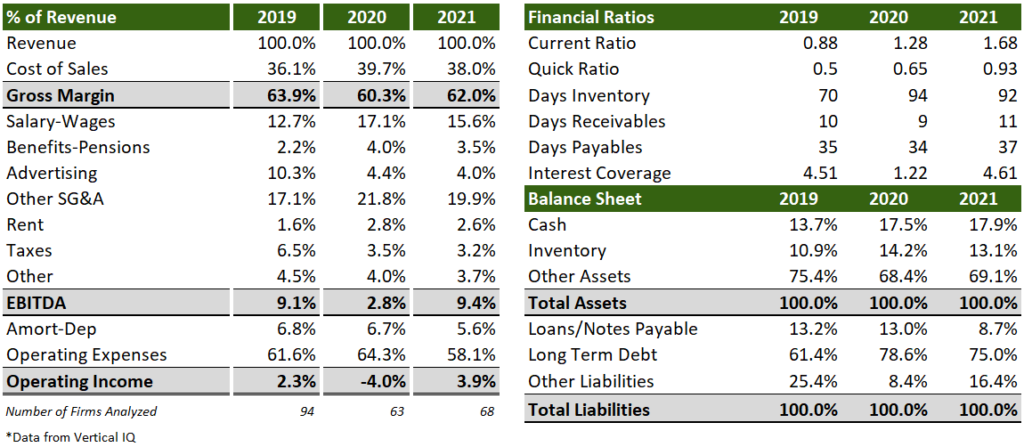Below is a list of factors to consider when understanding your brewery.
Public Information to Follow
Financial Model Considerations
- Irregular cash flow
- Seasonality of orders: Beer tends to be enjoyed in the summer months. Additionally, the high production costs and lead time required to meet demand means expenses and revenue will not always align in the same week or month.
- Managing inventory
- Limited storage space will require planning to meet seasonal demands and seasonal products.
- Marketing
- Effective marketing is key in a hyper competitive industry (~1,900 microbreweries in 2022)
- Profit drivers
- Brand – A deep understanding of your total addressable market and how your brand resonates and captures this market. This area will be baked into your assumptions and revenue drivers.
- Managing inventory – Make sure demand matches your finished goods production throughout the year. Important metrics will be:
- Days Sales of Inventory (DSI): (Avg inventory/COGS) * 365 which measures the average number of days it takes to sell off inventory.
- Inventory Turnover: (COGS/Avg Value of Inventory) which measures how many times inventory has been replaced in a period.
- High utilization of assets – maximizing production and minimizing waste. This will require monitoring unfinished to finished goods.
Recent Industry Metrics (Companies <$5M revenue)

Highlights from this vertical analysis and financial ratios:
- Revenue stayed flat from 2020 to 2021 but salary, wages increased (pre-inflationary)
- More inventory on hand post-pandemic
- No revenue growth in 2021 didn’t force days payables out
- Cost of goods saw increase in 2023 but not as much as other industries (chart below, from BLS)

Beer Consumption in the United States

For more information on building financial models see here.
Please contact me here if you found this useful or want more information.

